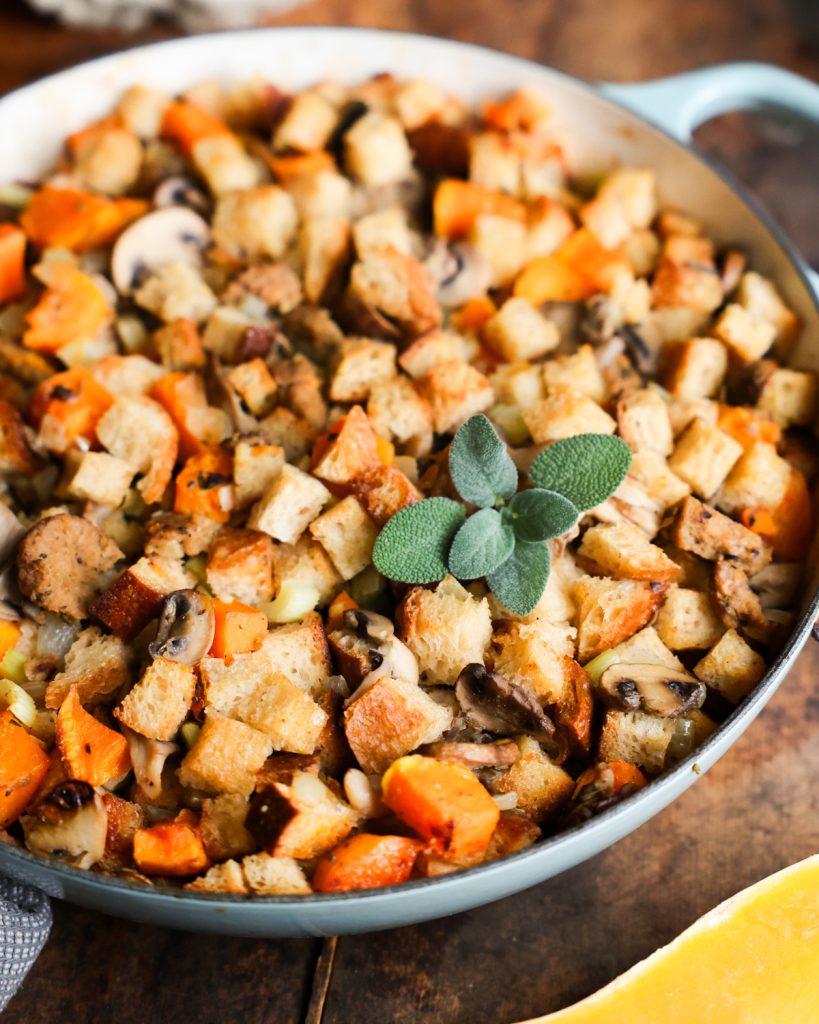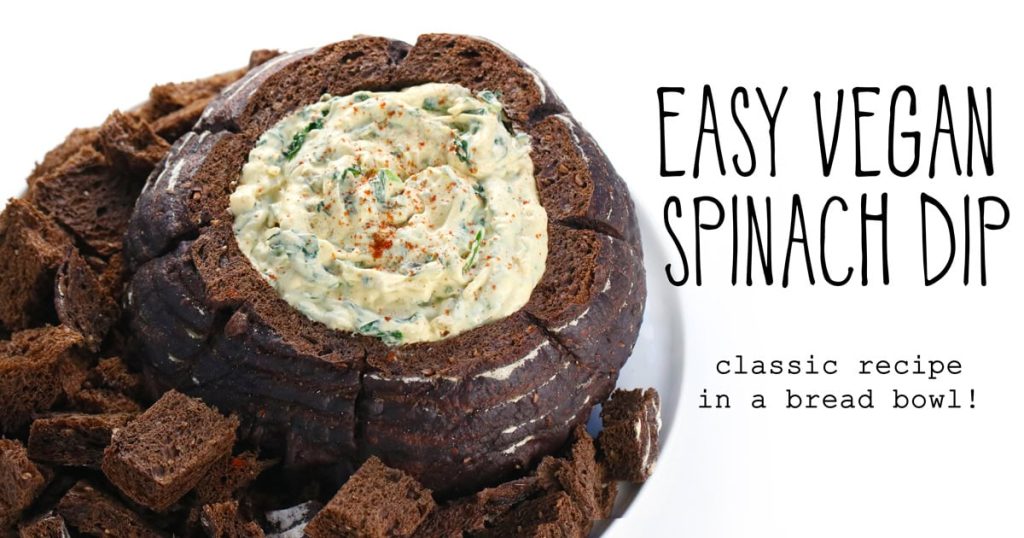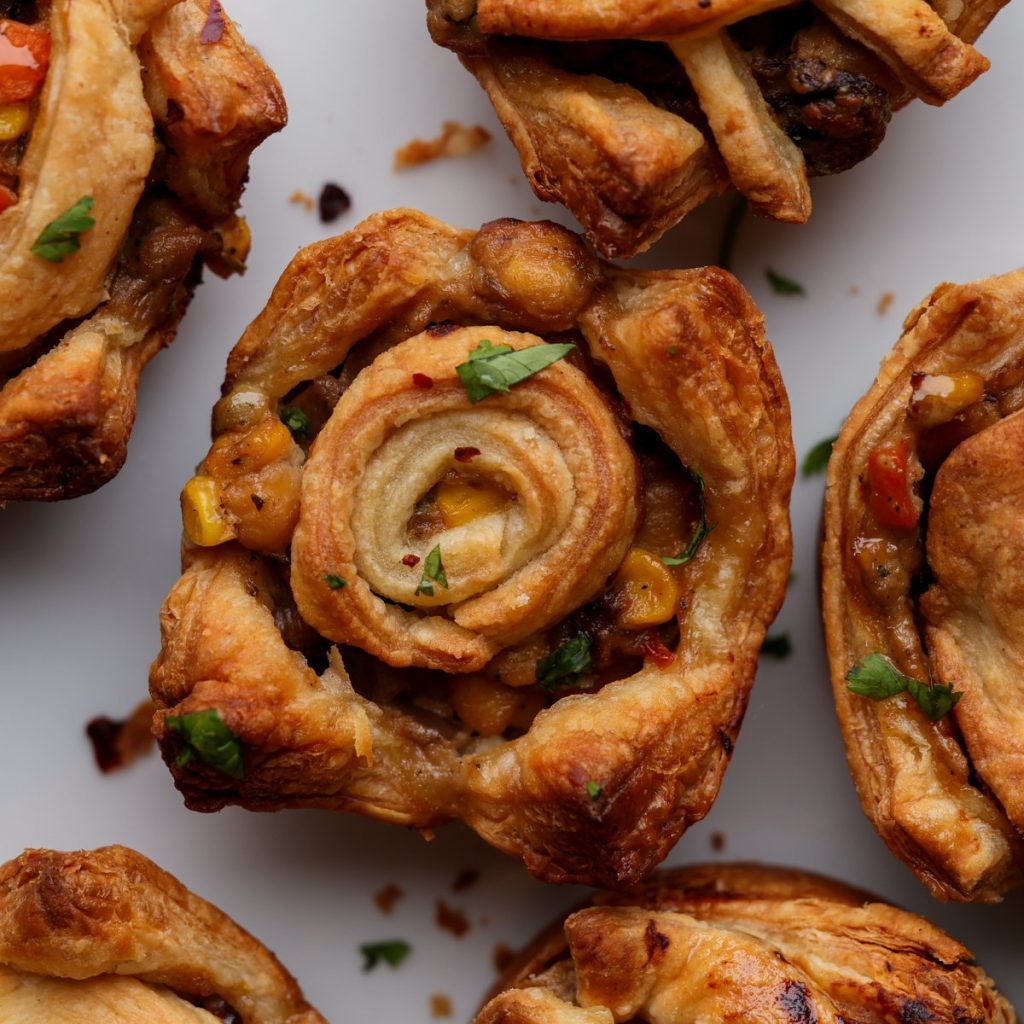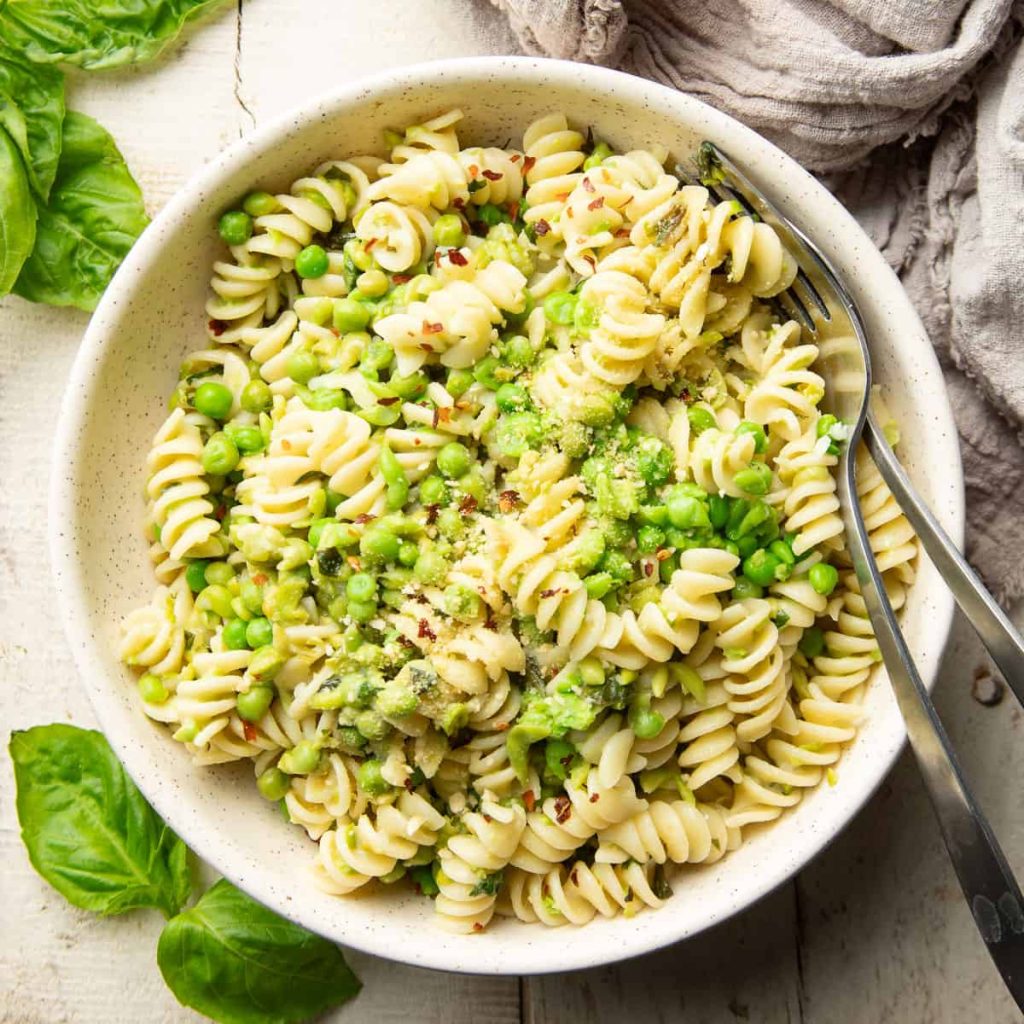
This pasta with peas and fresh basil is so simple, but seriously packed with flavor! It’s a super easy pasta dinner that can be ready in about twenty minutes, so it’s perfect for busy weeknights.
In case you didn’t know, pasta and peas are an amazing combination! Maybe not the most obvious one, but trust me, they’re delicious together.
I first discovered this a few years ago when I created my pea pesto stuffed shells recipe. They’re so good! It’s definitely one of my favorite dinners, especially during the spring. But it’s also one of those meals I reserve for weekends and special occasions, as there’s a bit of work and planning involved.
Sometimes I crave the flavors of that dish during the week, so I decided to come up with a dish featuring similar flavors and textures, but in a much simplified format. That’s where this pasta with peas recipe originated! It’s about as easy as a pasta dinner can get, and full of delicious flavors like garlic, fresh basil, and lemon juice.
Jump to:
Ingredients You’ll Need
- Pasta. The recipe calls for dried rotini pasta, but you’re welcome to use any pasta shape you like. Make sure your pasta is vegan. Read my guide to vegan pastas if you’re not sure what to look out for.
- Olive oil.
- Garlic.
- Coconut milk. We’re using full-fat coconut milk, in order to give the sauce a creamy consistency. Light coconut milk can be substituted if you’d like to reduce the fat and calorie content of the recipe.
- Frozen peas. If you’d like to use fresh peas, be my guest! Just make sure to cook them fully before adding them to the recipe. The short five minute simmer time we’re using here just won’t be enough.
- Salt and pepper.
- Lemon juice. Freshly squeezed juice is crucial if you want your pasta to have the best possible flavor.
- Fresh basil.
- Red pepper flakes. These will add a little kick to your pasta. Use extra if you’d like some extra heat, or leave them out for a milder dish.
- Vegan Parmesan cheese. This is totally not required — the dish is delicious on it’s own! If you’d like to use it, you’re welcome to use store-bought or homemade vegan Parmesan.
How It’s Made
The following is a detailed photo tutorial on how to make this dish. Scroll all the way down if you’d like to skip right to the recipe!
The first thing you’ll want to do is to get your pasta boiling. Since it’s a mostly hands-off task, you can begin making the sauce in the meantime.
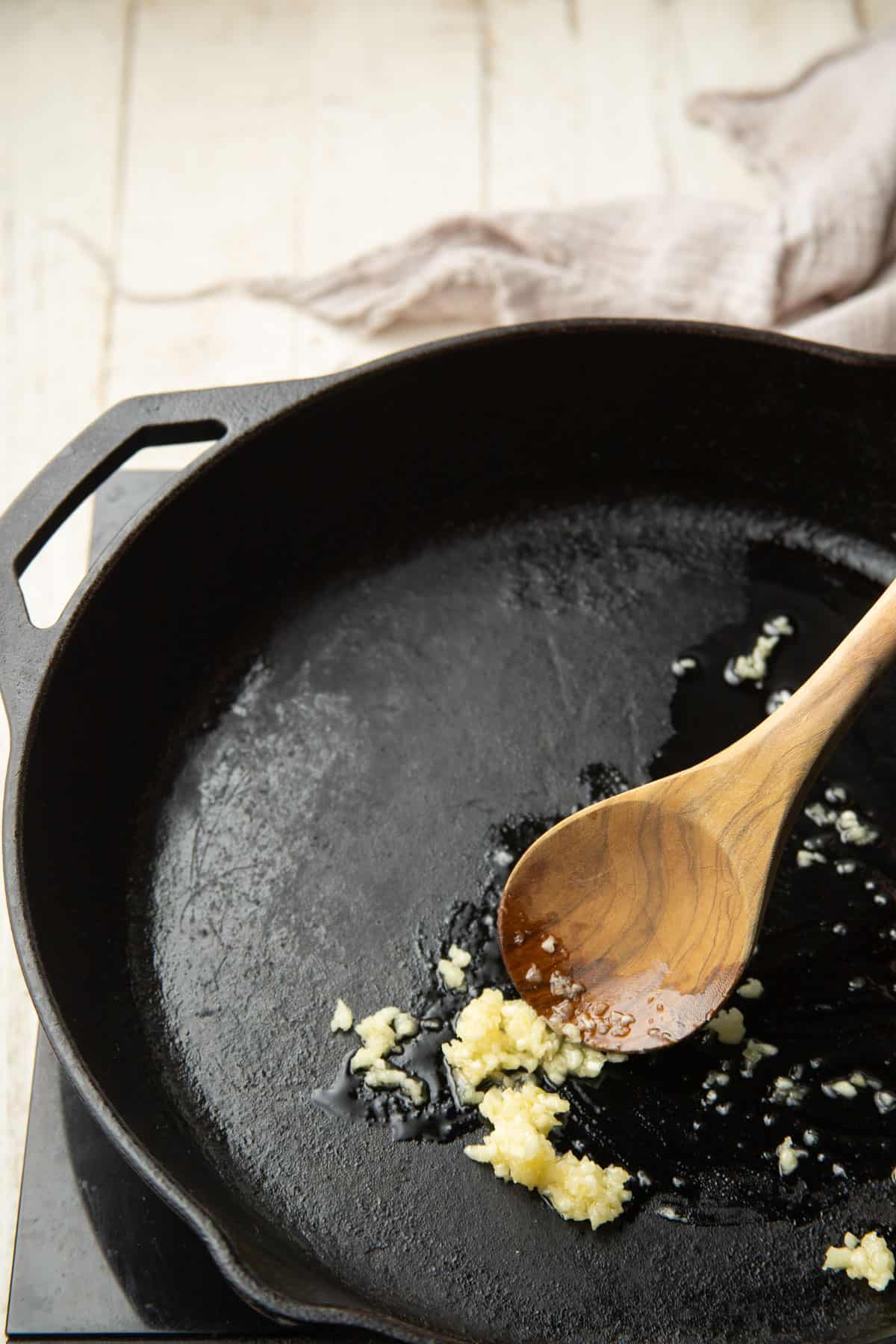
Heat some oil in a skillet and add your minced garlic. Cook the garlic briefly, until it becomes aromatic. Stir it constantly while it cooks, to prevent it from burning.
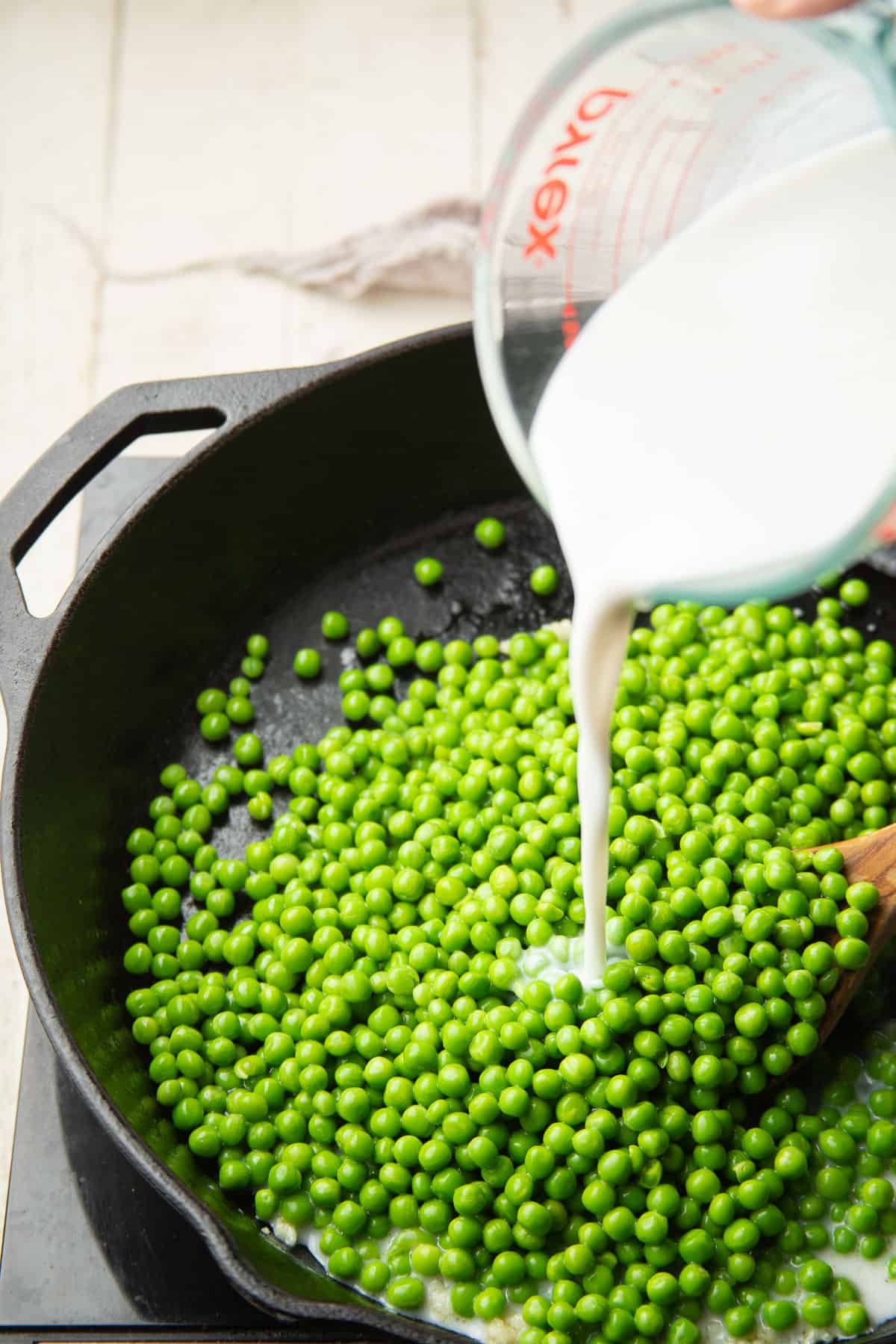
Add your peas to the skillet, making sure they’re fully thawed. Stir in the coconut milk and a teaspoon of salt.
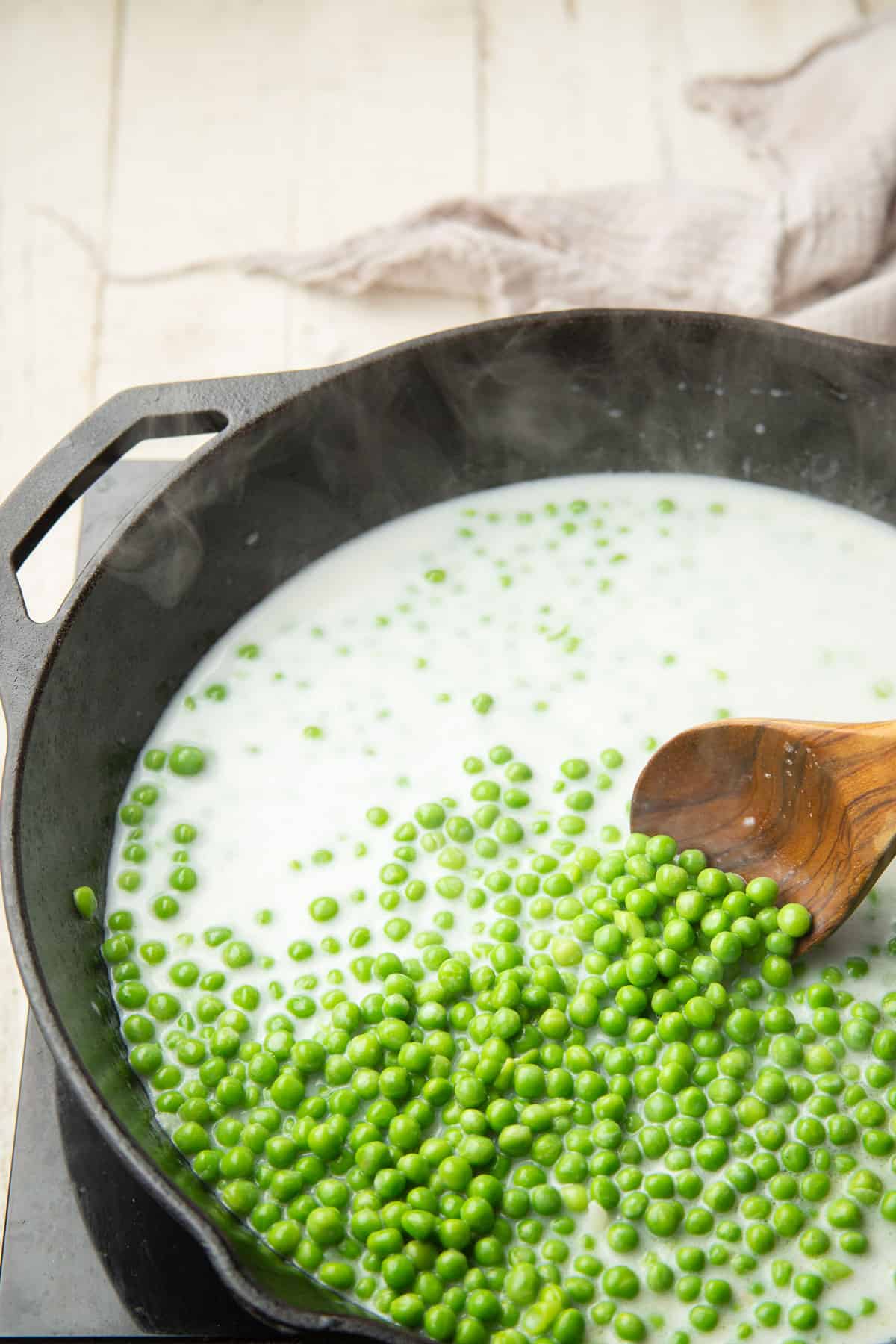
Bring the liquid to a simmer and cook everything for about five minutes. The goal here is to heat and soften the peas a bit, reduce the coconut milk, and mellow out the garlic.
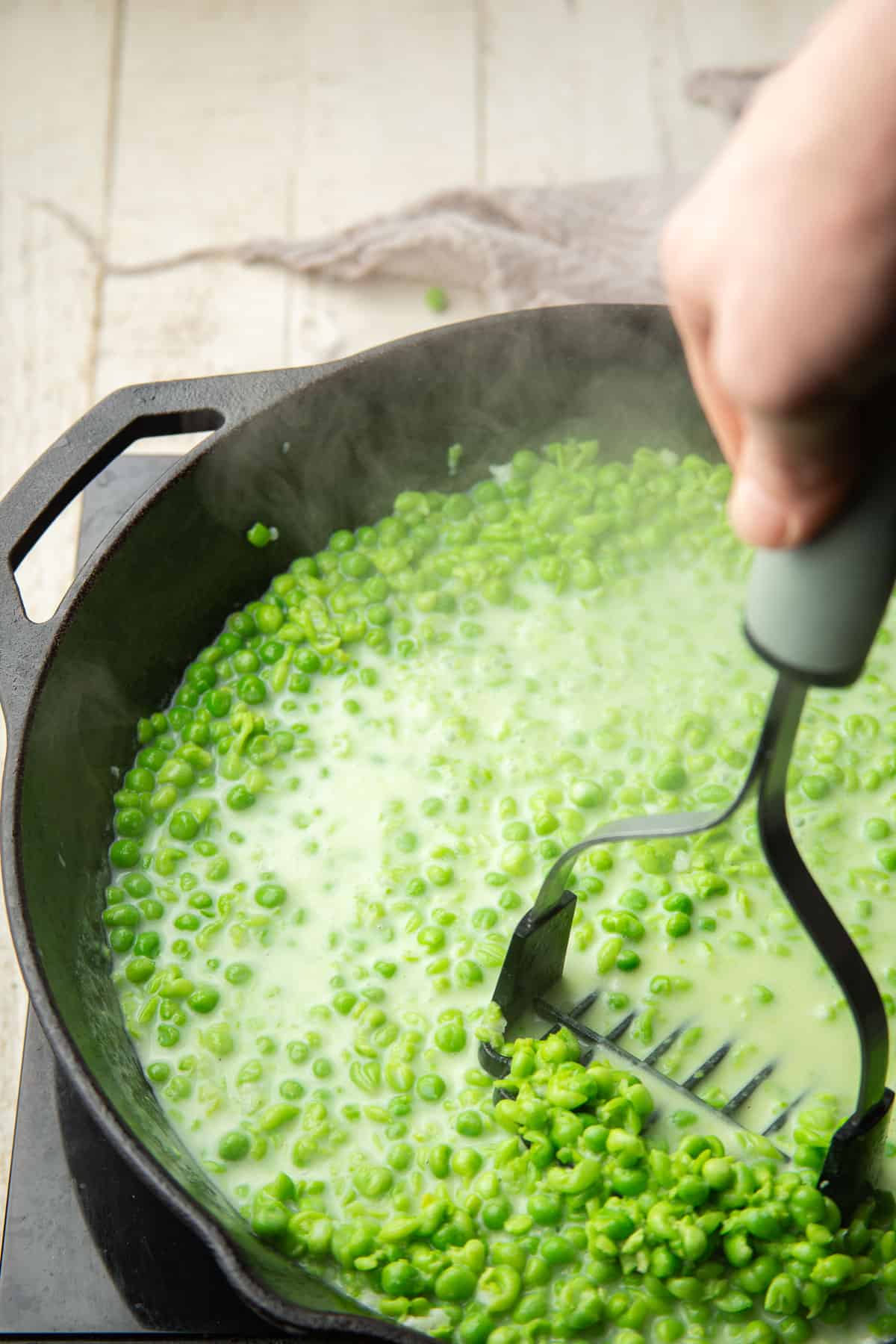
Now grab a potato masher (or a fork, if that’s how you roll) and mash up about half of the peas. You can mash a bit more or less peas to vary the texture of the sauce, if you’d like.
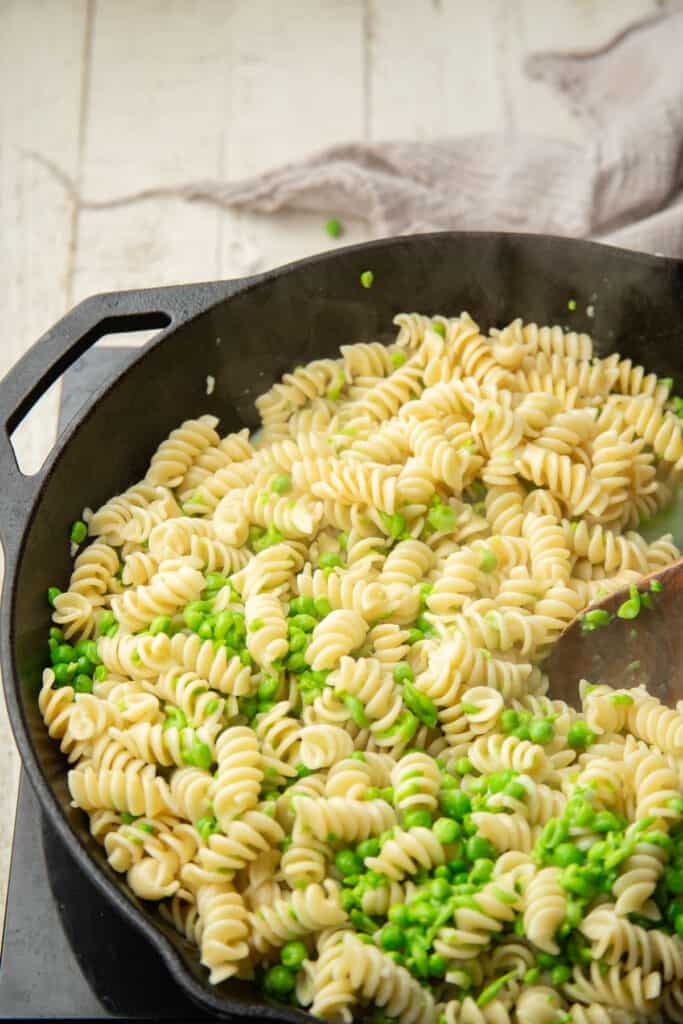
Stir in the cooked pasta and continue cooking everything for about a minute. We’re just reheating the pasta here.
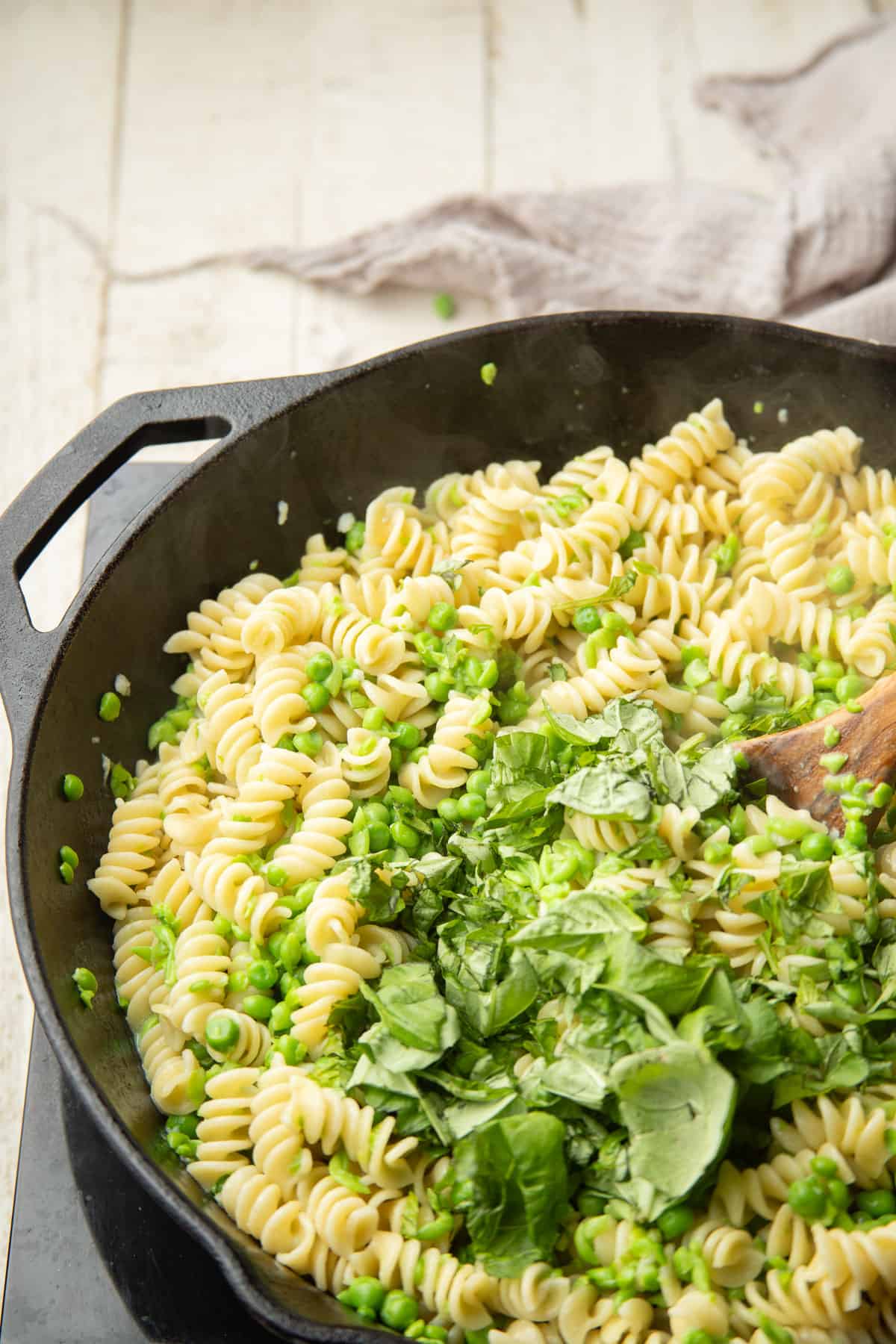
Now take the skillet off of heat and stir in the lemon juice and basil. Season the pasta with additional salt, pepper, and red pepper flakes to taste.
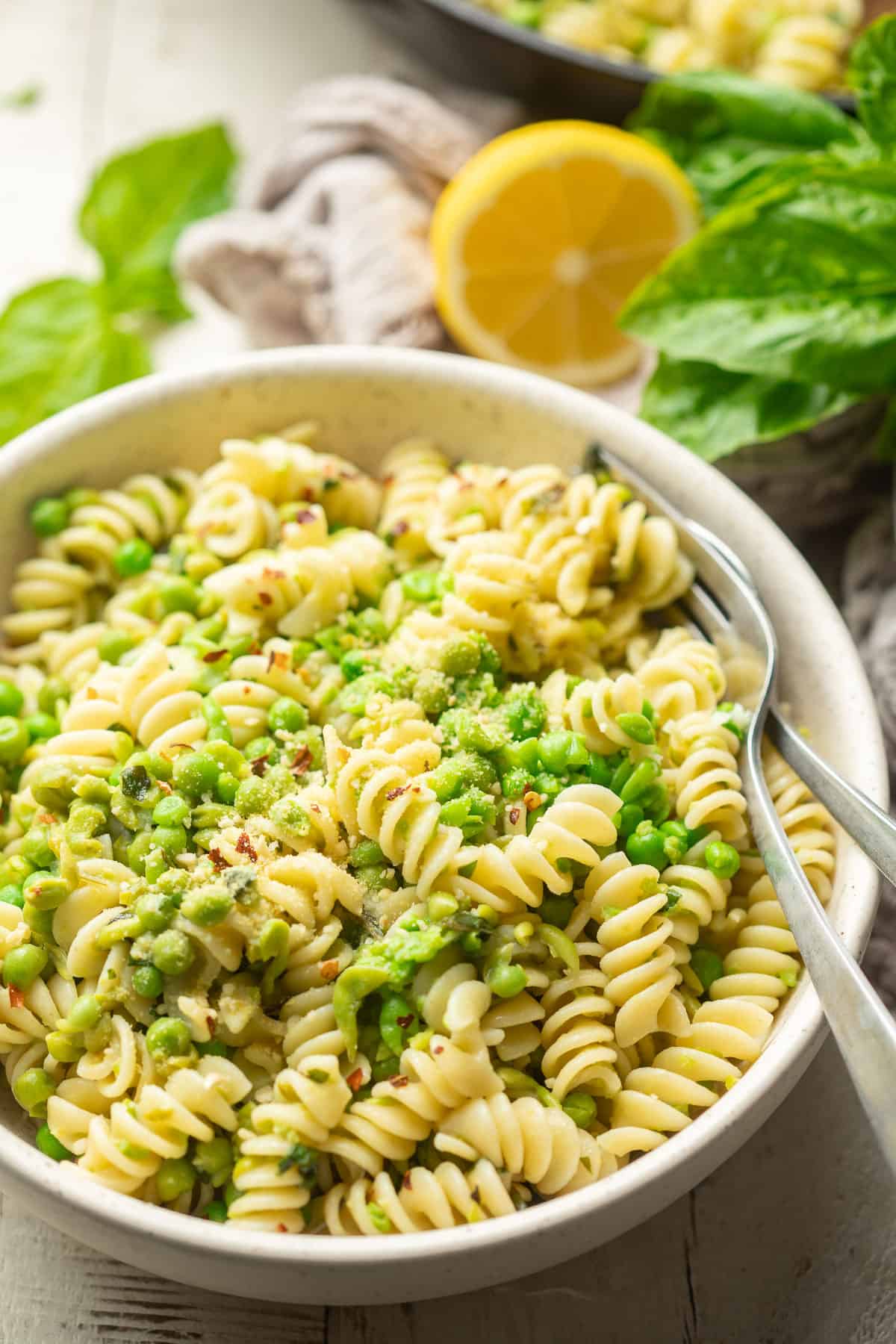
Your pasta with peas is all ready! Optionally, top each bowl with a sprinkle of vegan Parm.
Leftovers & Storage
Leftover pasta with peas and basil will keep in an airtight container in the refrigerator for about three days, or in the freezer for about three months. Add some water when you heat it up if the sauce has dried up during storage.
More Pasta Recipes
Like this recipe? If so, please stop back and leave me a review and rating below if you try it! Also be sure to follow me on Facebook, Pinterest or Instagram, or subscribe to my newsletter for more recipes like this one!
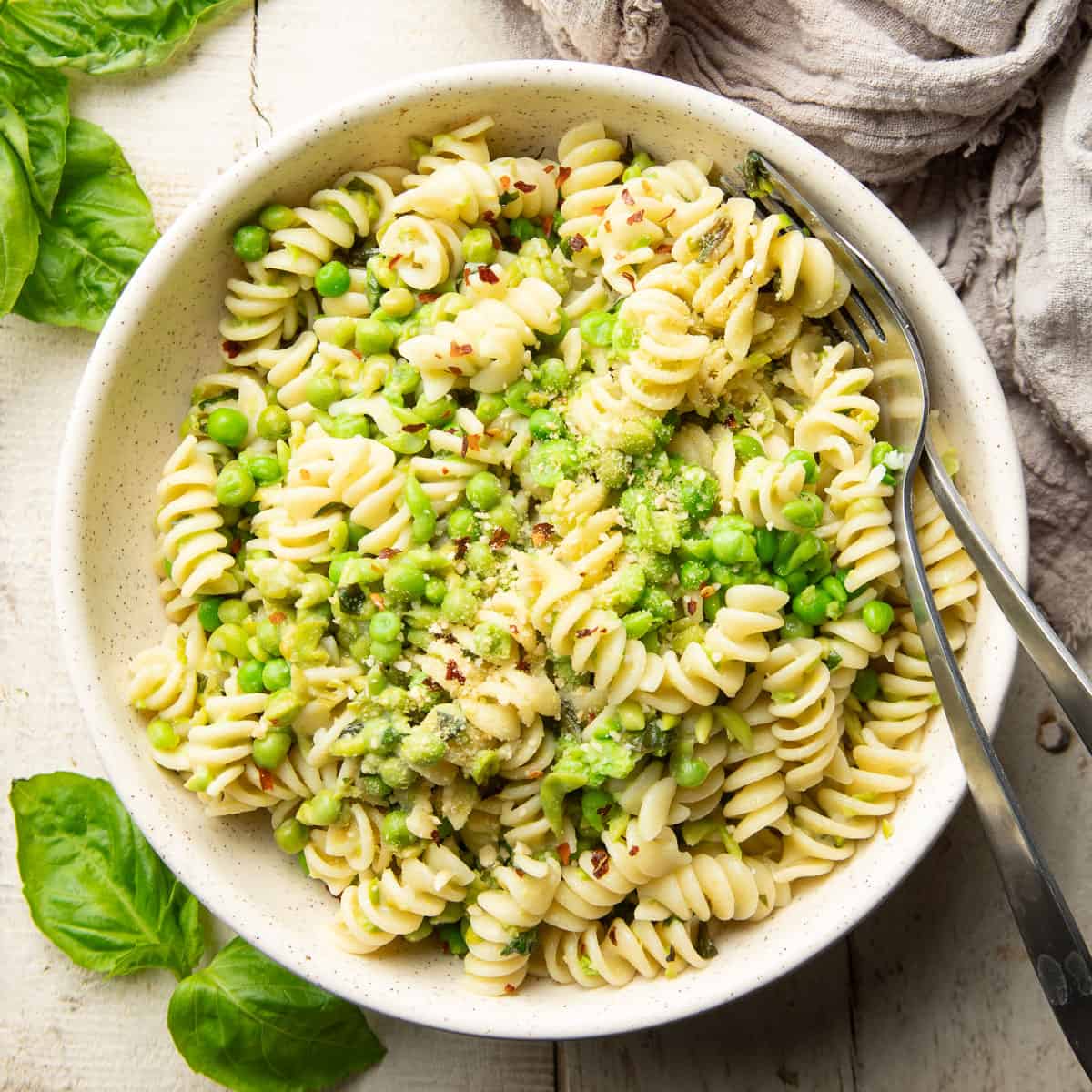
Pasta with Peas & Basil
This pasta with peas and fresh basil is so simple, but seriously packed with flavor! It’s a super easy pasta dinner that can be ready in about twenty minutes, so it’s perfect for busy weeknights.
Ingredients
-
12
ounces
dried rotini pasta,
or pasta shape of choice -
1
tablespoon
olive oil -
4
garlic cloves,
minced -
1
cup
full-fat coconut milk -
16
ounces
frozen peas,
thawed (about 3 cups of peas) -
1
teaspoon
salt,
plus more to taste -
2
tablespoons
lemon juice -
½
cup
fresh basil leaves,
chopped -
Pinch
red pepper flakes,
or to taste -
Black pepper,
to taste -
Vegan Parmesan cheese,
for serving, optional
Instructions
-
Bring a large pot of water to a boil. Add the pasta and cook it according to the package directions. Drain the pasta into a colander when it’s done.
-
While the pasta cooks, coat the bottom of a large skillet with the oil and place it over medium heat. Once the oil is hot, add the garlic. Sauté the garlic for about a minute, stirring constantly, until it become very fragrant.
-
Stir in the coconut milk, peas, and salt. Raise the heat to high and bring the coconut milk to a boil. Lower the heat and let the mixture simmer for about 5 minutes.
-
Use a fork or potato masher to mash about half of the peas (Note 1).
-
Add the cooked pasta to the skillet and stir to combine it with the peas and sauce. Cook everything for about a minute more, then remove the skillet from heat.
-
Stir in the lemon juice and basil. Season the pasta with additional salt to taste, if desired, along with some red pepper flakes and black pepper.
-
Serve with a sprinkle of vegan Parmesan cheese.
Recipe Notes
- You can mash more or less of the peas to achieve your preferred texture.
Nutrition Facts
Pasta with Peas & Basil
Amount Per Serving
Calories 445
Calories from Fat 126
{8466e38f199acc0b56b221a7b99587ba7df7b1c007902bc779bf0ba15c186af7} Daily Value*
Fat 14g22{8466e38f199acc0b56b221a7b99587ba7df7b1c007902bc779bf0ba15c186af7}
Saturated Fat 9g45{8466e38f199acc0b56b221a7b99587ba7df7b1c007902bc779bf0ba15c186af7}
Polyunsaturated Fat 1g
Monounsaturated Fat 3g
Sodium 480mg20{8466e38f199acc0b56b221a7b99587ba7df7b1c007902bc779bf0ba15c186af7}
Potassium 496mg14{8466e38f199acc0b56b221a7b99587ba7df7b1c007902bc779bf0ba15c186af7}
Carbohydrates 66g22{8466e38f199acc0b56b221a7b99587ba7df7b1c007902bc779bf0ba15c186af7}
Fiber 7g28{8466e38f199acc0b56b221a7b99587ba7df7b1c007902bc779bf0ba15c186af7}
Sugar 7g8{8466e38f199acc0b56b221a7b99587ba7df7b1c007902bc779bf0ba15c186af7}
Protein 15g30{8466e38f199acc0b56b221a7b99587ba7df7b1c007902bc779bf0ba15c186af7}
Vitamin A 821IU16{8466e38f199acc0b56b221a7b99587ba7df7b1c007902bc779bf0ba15c186af7}
Vitamin C 40mg48{8466e38f199acc0b56b221a7b99587ba7df7b1c007902bc779bf0ba15c186af7}
Calcium 54mg5{8466e38f199acc0b56b221a7b99587ba7df7b1c007902bc779bf0ba15c186af7}
Iron 4mg22{8466e38f199acc0b56b221a7b99587ba7df7b1c007902bc779bf0ba15c186af7}
* Percent Daily Values are based on a 2000 calorie diet.
